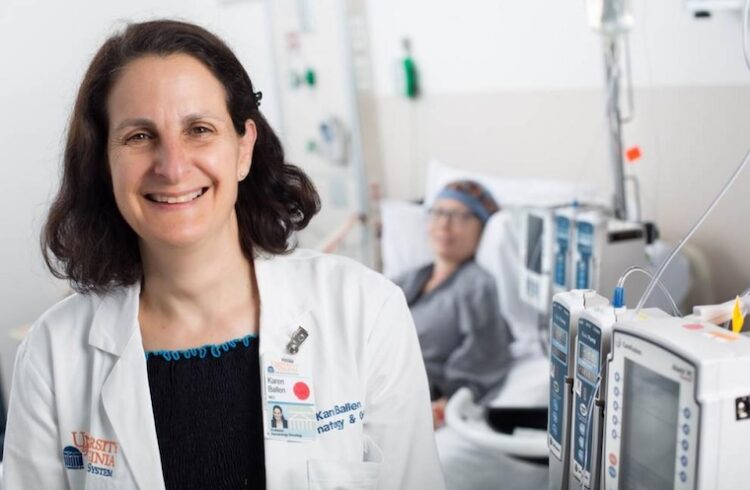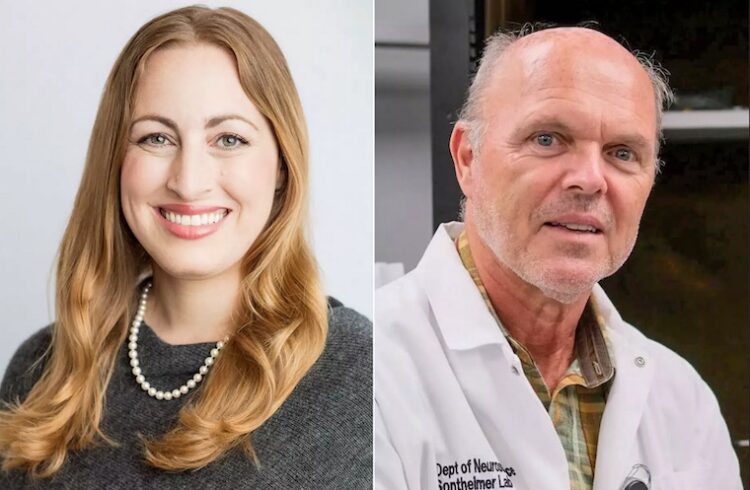
The Heart and Vascular Center at the University of Virginia Health System, which treats patients from all regions of Virginia and from West Virginia, Maryland and North Carolina, has announced its top innovations of 2008.
“Our team has continued to pioneer, adopt and improve the latest generation of minimally-invasive procedures and devices for heart care. In 2008, we also opened our region’s first heart care clinic for women, Club Red,” says Brian H. Annex, M.D., Chief of the Division of Cardiovascular Medicine. “As always, all of our accomplishments were motivated by a single goal: providing our patients with the best and most effective care available today.”
UVA’s latest heart care advances include:
New treatments for heart rhythm disorders During 2008, UVA became a leading provider of epicardial ablations, a new minimally-invasive treatment for ventricular fibrillation, or V-fib, a condition in which the heart’s lower chambers beat erratically. The Health System also joined the small percentage of U.S. hospitals that perform surgical ablations for atrial fibrillation, or A-fib, a rhythm disorder in the heart’s upper chambers. Ablations, which use heat to destroy malfunctioning electrical pathways, are commonly performed inside the heart to cure fibrillation. By contrast, the new treatments target the heart’s exterior. UVA offers them to patients only after medications and inside-the-heart ablations fail to their control rhythm disorders.
UVA’s nationally-recognized expert in epicardial ablations is Srijoy Mahapatra, M.D., a cardiac electrophysiologist. In addition to performing 61 epicardial ablations in 2008 – one of the largest volumes in the U.S. – Dr. Mahapatra began developing new specialized tools and launched a research program to make the treatment more effective. Working in collaboration with cardiothoracic surgeon Gorov Ailawadi, M.D., he performed UVA’s first surgical ablations (which are also known as mini-maze procedures) on ten patients last year.
Robotic system to treat atrial fibrillation In another 2008 milestone, UVA became the first medical center in the Southeast – and the tenth in the U.S. – to use a new robotic catheter system that potentially expands the locations on the heart where specialists can perform ablations to treat A-fib. Because it has two sheaths that can be rotated a combined 360 degrees, UVA’s new Sensei TM Robotic Catheter System makes it easier for electrophysiologists to maneuver the catheter into difficult-to-reach anatomy on a patient’s heart.
The system has an open-platform design, a feature that lets UVA staff experts tailor treatment to a patient’s specific condition and anatomy. “We can use any ablation catheter based on what’s best for the patient,” says J. Michael Mangrum, M.D., Director of UVA’s Atrial Fibrillation Center. During 2008, UVA electrophysiologists performed 55 A-fib ablations with the Sensei robot, the system’s third largest volume in the world.
In December 2008, the UVA’s A-fib Center performed its 1,000th ablation, a milestone that signifies a breadth of experience that few U.S. institutions can match.
Adult congenital and valvular heart disease The success of U.S. physicians in treating children with congenital heart disease has created a unique problem: so many of those youngsters have reached adulthood that they now outnumber both the pediatric population with the condition and the cadre of cardiologists trained to treat them. Responding to this situation, UVA’s Heart and Vascular Center has created the state’s first center for Adult Congenital Heart Disease. An interdisciplinary program offering medical and surgical expertise, the center is co-directed by D. Scott Lim, M.D., an interventional and pediatric cardiologist, and Robert W. Battle, M.D., Vice-Chief of the Division of Cardiovascular Medicine. They work in collaboration with thoracic surgeons, Irving L. Kron, M.D., Chief of Cardiovascular Surgery, and Benjamin B. Peeler, M.D., Surgical Director for the Virginia Children’s Heart Center.
During 2008, UVA also strengthened its reputation as the state’s only provider of innovative, minimally-invasive therapies for mitral and aortic valve disease. Working as co-investigators, Drs. Lim and Kron, concluded the EVEREST II trial of the MitraClip, a novel system that enables surgeons to repair mitral valves through a catheter rather than by performing open heart surgery. They also initiated patient enrollments in the PARTNER trial which is evaluating a catheter-based aortic valve replacement system.
Temporary heart pump A catheter-installed device which temporarily takes over the left ventricle’s job of pumping blood is allowing many critically ill and high-risk cardiac patients at UVA to undergo lifesaving procedures they otherwise would be too weak or too sick to tolerate. UVA is the first hospital in Virginia using a left ventricular assist device (LVAD) known as the TandemHeart®. Unlike other LVADs, it does not require a major surgical procedure and a chest incision to install.
James Bergin, M.D., Medical Director of UVA’s Heart Failure/Heart Transplantation program says many of his patients have benefitted from the TandemHeart. The device has also helped patients undergoing high-risk stenting, angiolplasty and electrophysiology procedures. Michael Ragosta, M.D., Director of the Cardiac Catheterization Laboratories and Director of Interventional Cardiology at UVA, says, “The TandemHeart is a fabulous tool to support patients who are critically ill and who wouldn’t otherwise survive.”
Enhanced imaging capabilities Whether they are being evaluated for coronary artery disease, having a heart valve repaired or receiving many other heart care services at UVA, patients are benefitting from new, state-of-the-art equipment in the Cardiovascular Imaging Center. A comprehensive multi-disciplinary program led by Christopher M. Kramer, M.D., the center expanded its programs in cardiac magnetic resonance (MR) and computerized tomography (CT) during 2008.
The center’s new equipment includes a 3.0T Siemens Trio magnetic resonance imaging scanner, a Siemens dual-source 64-decector computerized tomography scanner, and new 3D echocardiographic equipment. According to Dr. Kramer, the new equipment’s advanced imaging and visualization capabilities give UVA experts an added edge in providing accurate diagnoses and in developing optimal treatment plans for heart care patients.
Emergency treatments for aortic ruptures For the first time last year, UVA specialists used endografts – stents that are placed inside arteries using catheters and advanced imaging equipment – to repair ruptured abdominal aortic aneurysms, or AAAs, saving the lives of three patients. An AAA is a bubble-like bulge that forms on the wall of the aorta, the large artery that runs from the heart, through the chest and into the stomach. Because AAA ruptures cause rapid and massive internal bleeding, emergency treatments require both a high level of physician skill and speed. UVA specialists have both, thanks to their extensive experience in treating tears in the chest (thoracic) portion of the aorta.
“In 2005, our team was the first in the U.S. to place an FDA-approved thoracic aortic endograft for treatment of a thoracic aneurysm,” says Alan Matsumoto, M.D., Interim Chair of the Department of Radiology. “We have done about 150 thoracic aortic endograft procedures since then and drew upon that experience to make our first emergency AAA repairs.” According to Dr. Matsumoto, UVA is able to treat aortic ruptures quickly and effectively because of close collaboration and interdisciplinary planning among interventional radiologists, cardiovascular and vascular surgeons, anesthesiologists and their respective team members.
Women’s heart care clinic Tailoring heart care to the unique needs of women is the goal of UVA’s Club Red Clinic, which began seeing patients in December 2008 and is scheduled to formally open in February 2009. Led by cardiologists Amy Tucker, M.D., and Angela Taylor, M.D., and by endocrinologist Anthony McCall, M.D., and by nurse practitioner Anne Hedelt, FNP, the clinic cares for women with coronary heart disease, diabetes, metabolic syndrome and cardiovascular risk factors. Club Red’s multi-disciplinary support team includes nurse practitioners, cardiovascular disease nurses, exercise physiologists, nutritionists, diabetes educators and pharmacists.
Club Red Clinic patients can schedule a traditional 30-minute appointment or choose a newer option called a shared medical appointment, or SMA. Typical SMAs involve 10-15 participants who meet for 90-minutes with the clinic’s multi-disciplinary team. SMAs combine the one-on-one consultation of an individual outpatient visit with the power and intimacy of a support group that is focused on improving heart health. Patients who opt for an SMA generally get quicker, longer access to physicians and the health care team. Because SMA participants often have similar problems and questions, group members also benefit by listening to medical assessments and advice for other patients and from the suggestions, inspiration and support provided by their peers. So far, over 90 percent of Club Red’s SMA participants have expressed satisfaction and said they would attend a group appointment again.
About the UVA Heart and Vascular Center
The University of Virginia Heart and Vascular Center combines innovation, research, and the expert clinical skills of a nationally-ranked academic medical center to focus on one purpose – fighting and treating cardiovascular disease. Each year, the Center’s multi-disciplinary staff cares for more than 5,000 in-patients and conducts 35,000 out-patient visits.


